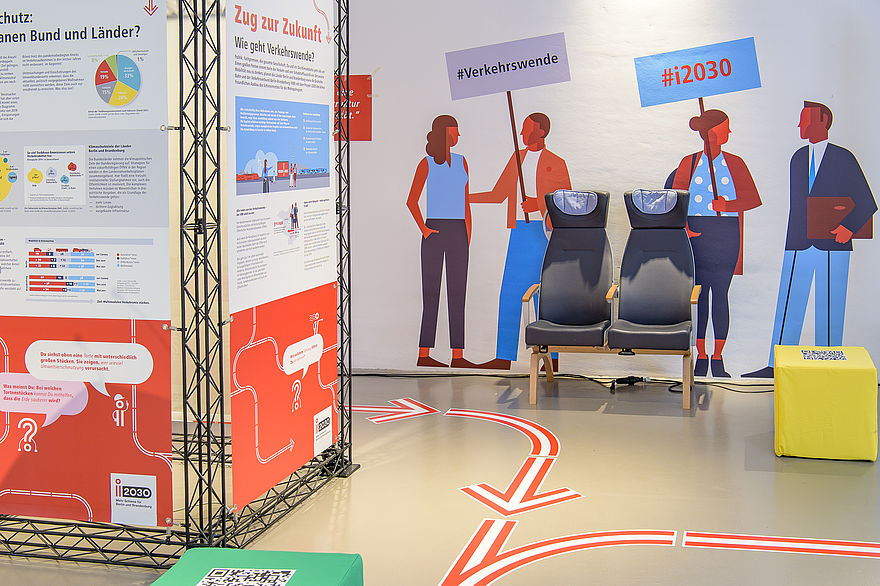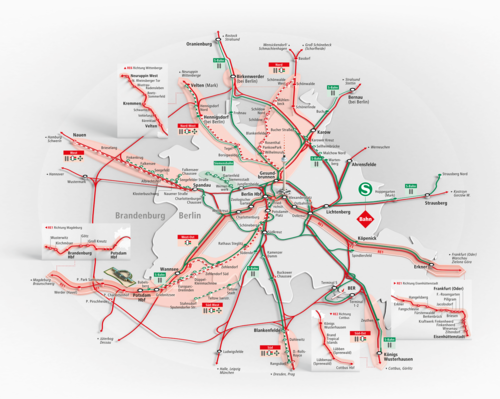How to make the Mobility Transition happen
Everyone is talking about mobility transition and the Verkehrsverbund Berlin-Brandenburg public transport authority (VBB) is charged with carrying out this process on behalf of the States of Berlin and Brandenburg. If CO2 emissions are to be reduced in the transport sector, many more people will need to switch from their own cars to climate-friendly public transport. By providing higher frequency, better performance, more comfort and climate friendly technologies for the trains, this trend can gain more strength. As can be seen most particularly in the i2030 rail expansion project, Berlin and Brandenburg along with Deutsche Bahn and VBB are firmly committed to accelerating the mobility transition in the capital region. The VBB’s special exhibition in the Deutsches Technikmuseum (Ladestraße section) provides visitors with a vivid look into the ongoing process.

Current Developments
Four theme-based displays provide a clear picture of the current developments:
- “Train to the Future” serves as an introduction to the subject matter. A number of overviews explain the federal government’s climate policy goals and the regional plans for the capital region and how they are to be implemented with the help of, among others, the joint i2030 project.
- The Berlin-Spandau - Nauen route is one of the largest i2030 sub-projects and demonstrates that expansion of the rail infrastructure is an indispensible prerequisite for increasing rail services. By scheduling more trains per hour and establishing a more stable timetable and additional stations, the towns, communities and the Spandau District that are situated along the railway line can be even better connected to the broader rail network in the future.
- The historic Siemensbahn is one of the regional rail lines that will be reactivated in the coming years. Our exhibition highlights the past, present and future of this railway line, which has been shut down since 1980, and shows how the goal of having commuter trains once again running to the newly growing Siemensstadt Square district can be achieved by the end of the decade.
- Alternative power units for trains represent important bridging technologies if the lines that have not yet been electrified are to be made independent of fossil fuels. The new technologies for battery-powered multiple units and hydrogen multiple units are here on display. Their role is to help facilitate a complete switch to environmentally friendly types of propulsion on the railways in Berlin and Brandenburg by 2037.
Backdrop for i2030

Grafik: VBB
More and more people are living and working in Berlin and neighboring Brandenburg - and when it comes to mobility, they are opting for environmentally friendly rail travel. To ensure that rail services can keep pace with the steadily growing mobility needs of an increasing population, the rail infrastructure in Berlin and Brandenburg must also continue to develop. This is precisely what the States of Berlin and Brandenburg, the Deutsche Bahn and the Verkehrsbund Berlin-Brandenburg transport authority (VBB) have joined forces to accomplish with their i2030 project.
Further information: www.i2030.de
